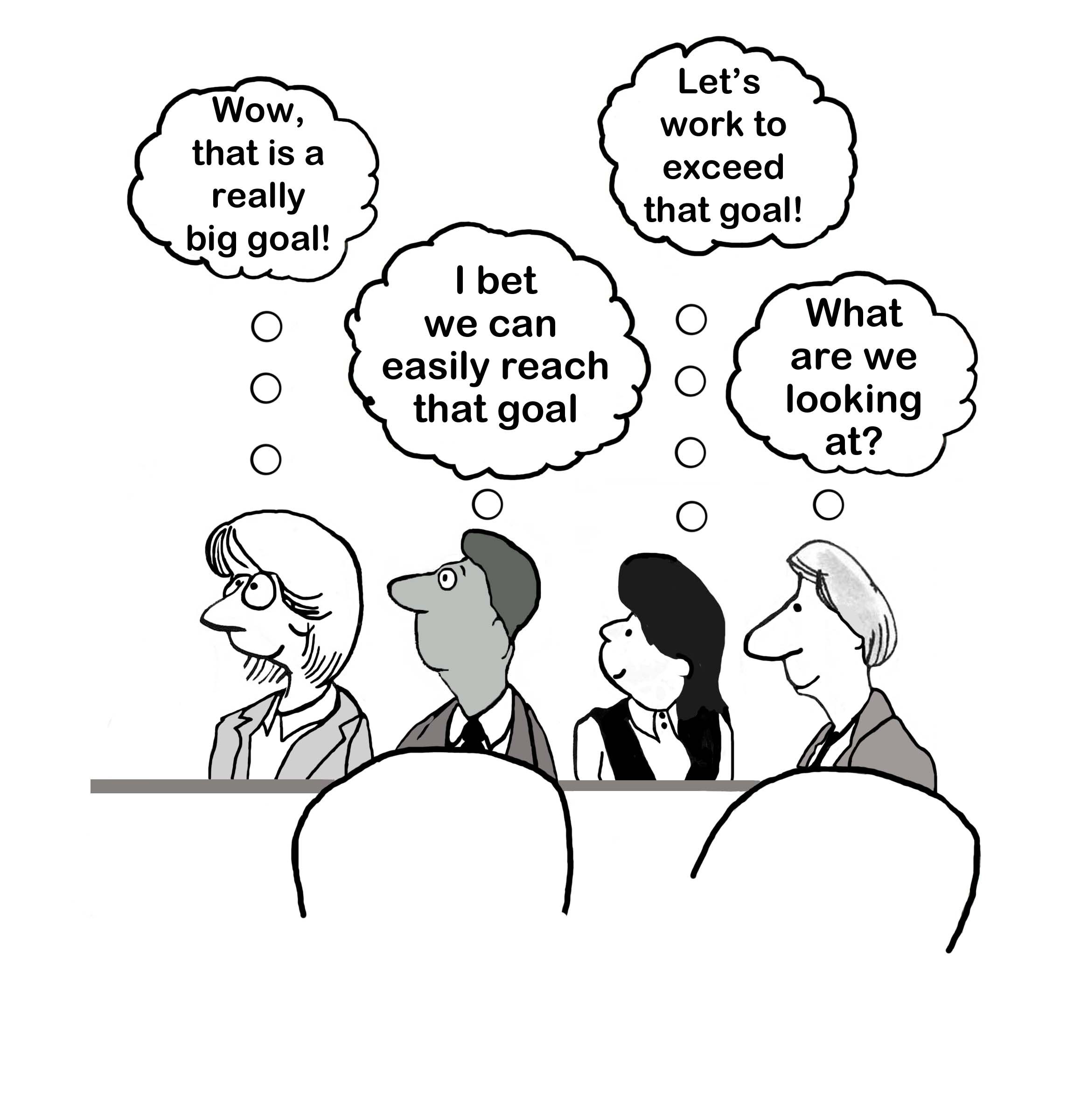
SMART Goals and when to use them.
Frustrated that you set SMART Goals and still don’t achieve them?
You’re not on your own. We are told all the time to make our goals SMART. However, SMART should not be applied to Goals at all. Getting SMART with day-to-day tasks and stepping stone objectives produces measurably better results. However if we are setting meaningful goals then applying SMART is counter-productive.
Click here to see “How to set Goals that actually work”
SMART STEPPING STONE OBJECTIVES:
Specific, Measurable, Attractive, Realistic, Time-bound
Please note that the acronym itself is a little confusing. The A and the R, generally referred to as “Attainable” and “Realistic” are surely the same thing? And if we’re being Specific, surely we’ve already covered the time-bound bit, making the T redundant? To avoid re-inventing the wheel it is best to forgive the slight duplication with the T and to consider the A as standing for “Attractive”, i.e. making sure any stepping stone objectives we set tie in closely with a really desirable, attractive longer term goal. (See below)
Smart: Specific
A specific objective has a much greater chance of being accomplished than a general one. To set a specific objective, there are few better starting points than considering Kipling and his “six good men and true”:
- Who: Who is involved?
- What: What do I want to accomplish?
- Where: Identify a location.
- When: Establish a time frame.
- Which: Identify requirements and constraints.
- Why: Specific reasons, purpose or benefits of accomplishing the goal.
sMart: Measurable
Establish concrete criteria for measuring progress toward the attainment of each goal you set. This is more easily said than done. It is true that what gets measured gets done, but it is often surprisingly difficult to measure the things you really want to know.
For example, if you want to increase sales, then increasing sales calls seems like a great place to start. However, sales staff aren’t necessarily able or willing to increase the number of calls they make. They might react in all manner of ways. They might put in more “easy” calls to existing, friendly, clients. The might start recording voice messages left as calls. The quality of the leads they are forced to chase might be far poorer that the ones they are currently choosing to call. They might cancel meetings or events to be able to make more cold calls. This is before we even consider the impact on their motivation and the effect that has on productivity.
Sales might stay the same or even go down as a result of trying to increase sales calls. There is a whole raft of hidden assumptions between the volume of sales activity and sales output. Unfortunately it tends to be the case that the measurable variables are normally several assumptions away from the output you really want to measure.
This all goes to say that think twice and then think a third time about what you are going to measure. Time invested in clear thinking is time well spent.
smArt: Attractive
Objectives succeed where they play a part in moving you towards a Goal that you really care about. Remember, your over-arching goals should not be SMART (Click here to see “How to set Goals that actually work”) but the steps towards these Goals need to be. These steps are more likely to me achieved where they are linked directly to a bigger goal which provides the motivation to put in the hard yards required. Bring the big Goal to mind on a daily basis and use the attractiveness of this Goal to shape day-to-day actions towards the smaller stepping stone goal.
smaRt: Realistic
To be realistic, an objective must represent positive steps which you are both willing and able to take. An objective can be both challenging and realistic; you are the only one who can decide just how stretching your objectives should be.
There is a school of thought that objectives and goals should be big and audacious (BAG – Big Audacious Goal) the logic is that expectation can sometimes limit performance and even if you don’t hit your BAG, then you’ve still made substantial progress. I would say that there is a time and a place for this, but blindly setting really high targets is not a healthy start point. I’ve yet to see any research which backs up the BAG approach to objectives and goals.
smarT: Time-bound
Clearly this is a duplication of being Specific, but it is a pretty helpful step to reiterate the need to set time frames to all of your objectives. Whilst we’re at it, make sure every action has a name on it and that the person in question OWNs the action and is held accountable.
Executive Coaching will help you to set and achieve clear goals and will make work more rewarding. These days, most top performers in business work with a coach.
If you would like to invest in yourself and the value of your business then call me on 07730 700258 to arrange a free introductory Coaching session.
